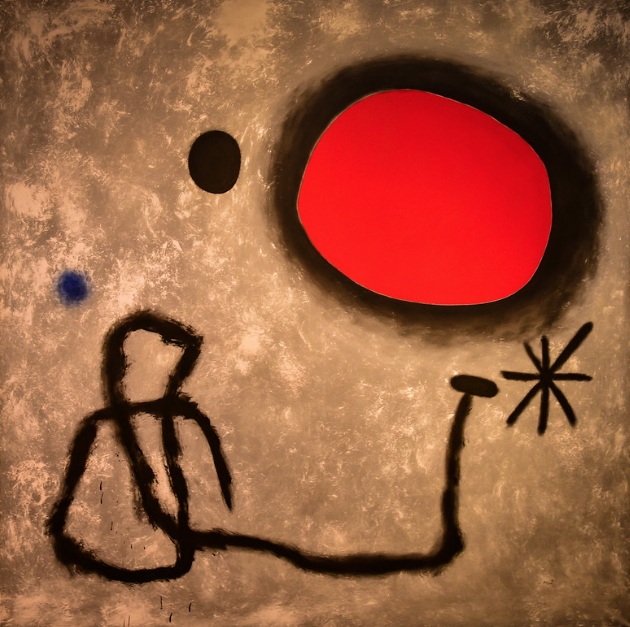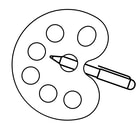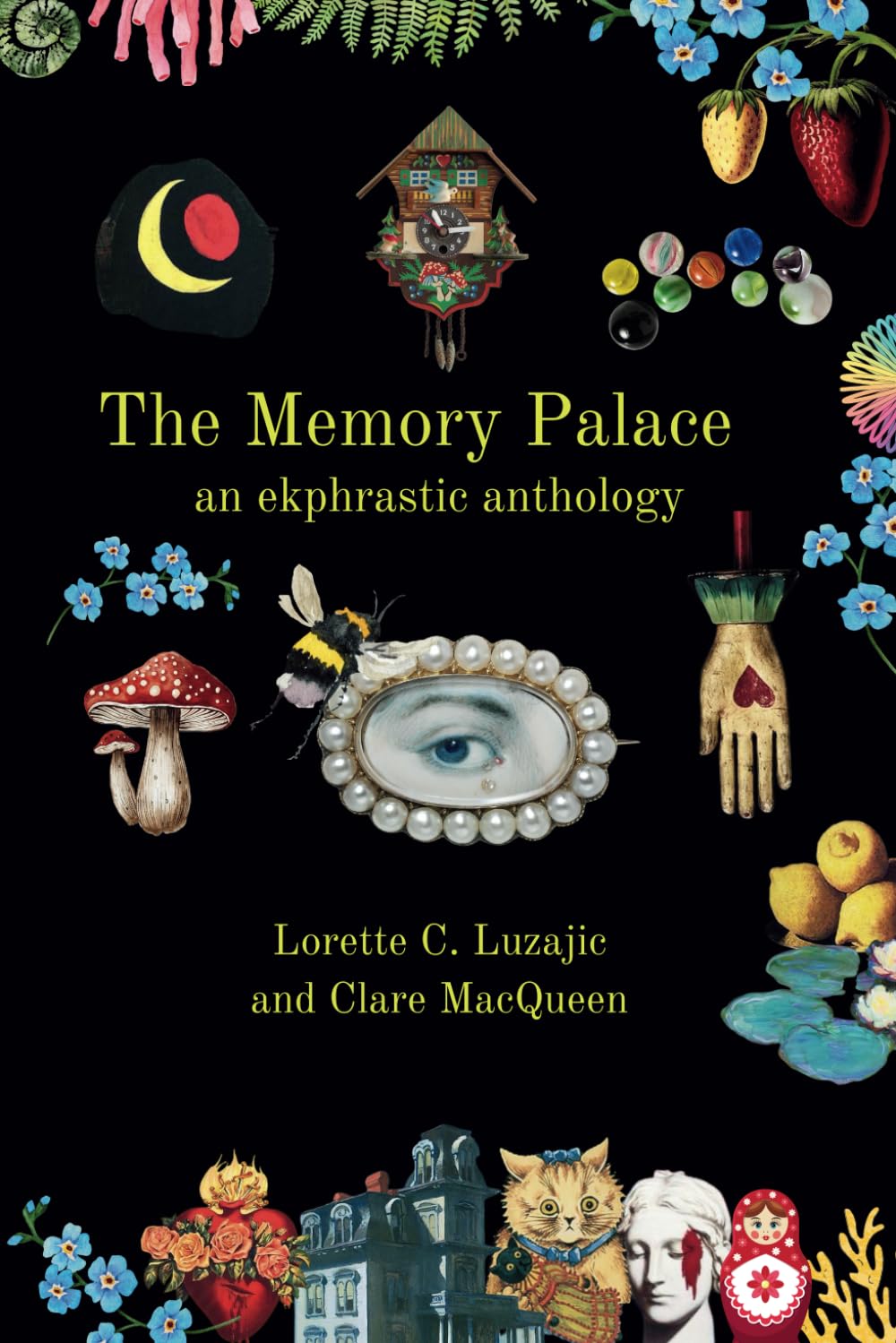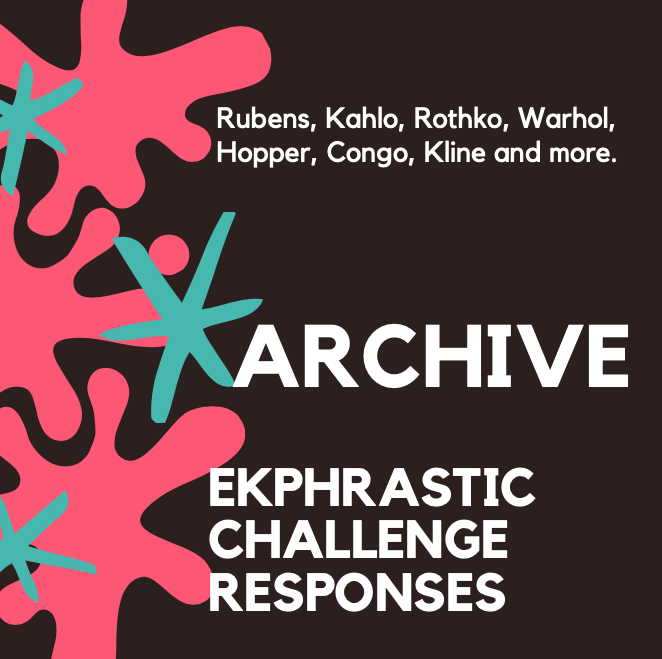|
Seeing Things A simple line painted with the brush can lead to freedom and happiness. Joan Miró The Exposition: Every day we see things, but poetry enables us to really "see things," to see what’s in the domains of the physical, the senses, and the imagination. We practice these in the “Seeing Things Poetry Workshop” which began in March 2019 at the Bright Hill Literary Center in Treadwell, New York. This workshop, under the direction of poet and teacher Robert Bensen, has continued in bi-yearly ten-week sessions through to today. Our group so loved our work together that we created “In-Between Workshops,” led by poet Pam Strother, because we wanted more. Some of us even met on our weeks off, and some of us have not missed a Monday night workshop for years. We were fortunate to have the library at Bright Hill for meetings through mid-March 2020, when we had to pivot to an on-line platform. While the change was disruptive and we look forward to meeting in person again, the Internet allowed poets to join us from considerable distances (The Netherlands, Florida, Washington, DC, and Michigan, for example), or to play the recorded discussions afterwards as long-distance observers. It also made it possible to invite distant poets to read in our “Tiny Desk Readings” series. We were honoured to inaugurate the series with Bright Hill’s founder, Bertha Rogers, and to continue with Liz Rosenberg, Carol Frost, Martin Willitts, Brendan Walsh, and most recently Rosalind Brackenbury. Renowned Elizabeth Bishop biographer and scholar Thomas Travisano visited twice, in person and later online, to enrich our knowledge of Bishop’s work as well. We are a collaborative group, working together on one another’s poems, supporting each poet’s vision with our reflections, all of us benefitting from the diversity of knowledge and perspectives that the members of our group offer. Our poetic range is great, and writing an ekphrastic poem as a collaborative effort based on a Miró painting, more boldly manifested our individualities. The projections and preoccupations, the obsessions and improvisations, make clear the individual strengths the poets bring to the task of translating a visual work of art to a verbal one. The Players: The members of our Seeing Things workshop come from many backgrounds: several teachers, a veterinary technician, a sneaker designer, a psychotherapist, a dancer, a biopsychologist, an organic farmer, a world traveler and citizen of the world, and several artists, just to name a few. From our educational backgrounds to our styles of writing, we are all unique. Let us introduce our players for this piece: David Bachner, Robert Bensen, Bhala Jones, Lynne Kemen, Michael Mirarchi, Michael Piercy, Pam Strother, Julie Suarez, Julene Waffle, Vicki Whicker, and Lisa Wujnovich. The Conflict: At a recent workshop, we decided to try something new. After sharing her experience with writing ekphrastic poetry and submitting several of her poems with the corresponding paintings that inspired them, Lynne Kemen was invited by Pam Strother to provide the next prompt for the group. Lynne “wanted to choose a painting that gave poets room to express what they saw. If I had chosen a more traditional painting, I felt it would limit writers. So I was looking for something abstract and thought of Miró. One of my favorite jazz albums by Dave Brubeck has Miró on the cover. I didn’t choose that painting, but I loved the idea of creating a poem with just some lines as inspiration.” That is, after all, as Miró states, from where freedom and happiness spring. The Prompt: A single abstract oil on canvas painting, 200 x 200.7 cm--the Joan Miró, Painting, 1953 which is on display at the National Museum of Western Art in Tokyo, Japan--is an image of a black squiggly line, human in shape, in the lower left corner of the canvas with an asterisk near the end of an extended arm-like line, a big red planet encircled with black above that on the upper right hand side of the canvas, and two other circles, one blue, one black, over the head of the figure--all on a neutral, mottled background. On first glance, it seems a simple, primitive painting, even child-like, but upon deeper inspection, it allows the viewer to sense some grander message. As Miró once said, "If you have any notion of where you are going, you will never get anywhere." And so, armed with our challenge, we embarked as we imagined Miró would, without specific direction in hopes of getting somewhere. Some of us were confused and still are when we saw Miró's work. When I first looked at the art, I saw a lunar eclipse and someone wishing they could hold the moon; others, such as Pam Strother immediately saw The Goddess in the midst of creation, others saw a joke of a politician. Some of us turned introspective or were just plain confused. Lisa Wujnovich thought of the year Miró painted this piece: “1953, the year I was swimming around in my mother’s womb . . . [it] conjured potential—desire, yearning to touch, as close as one’s own hand and as far away as the sun.” Julie Suarez said, “My responses to this painting ran the gamut from the ridiculous to the sublime. And I suppose Miró would have wanted it that way.” In fact, Lynne herself, who had fun with the poem, at first admitted, “What have I done?” when she sat down to write. In the end, each of us brought our own personality, our humor, our worry, and our whimsy to our ekphrastic poems. The results of the prompt were deliciously diverse. The Plot and Points of View: I / Etchings on the Wall Touch Tangelo sun seared against womb cave, spots floating in eye jelly, shimmering idea, from where petals overlap—like Eve, who ran her tongue across every leafed and satin body. How could she ignore the serpent, when she had tasted dew, a drop-- and there reflected her own hungry face. Dissolved with sun’s morning glare, fiery rays turned clarity mysterious, mist rising from cool water in her palm-- all that remained, a dot of exclamation. Lisa Wujnovich ** Musings on Miró Little chorister, what do you sing? a dirge for the dire earth, blazed upon by a huge sun? A lament for the blue planet, shriveled and nearly gone? An ode to a wayward star no one will wish upon? Is yours the last voice singing the last song? Courage, little chorister, sing on. Julie Suarez ** II / The Discovery Miró Miró on the Wall Confused. Start. Still? I’m leashed to bone. Gnashing red odds and ends. Time feels disturbed. Floating. Jetsam. My Miró Miró. On. The wall. My discarded dead matter dross searching. Well undone. Spain refuses remains scrap. This lumber. My son. Red sun. Soul wreckage lost cargo remains detritus waste. What waste. A rage of matter. I’m. Still. Hopeful. End. Vicki Whicker ** Joan Miró--Painting, 1953 If there’s a message in this painting I’m missing it. Don’t get exasperated, I chide myself. Start with what you see. The bright red ball—dramatic, dominant-- reminds me of a child’s drawing of the sun. But it doesn’t hover like the sun. Instead, Miró has wrapped the ball in a charcoal-gray circle and placed it in a hole. I feel as though I’m looking down into the caldera of a volcano that’s been squeezed into a crater of the moon. The mostly beige surface of the canvas even has a lunar, splotchy-cheese quality, punctuated by what could be passing planets—two of them: one pure black, the other smaller and blue. Or maybe the small blue shape is the shadow of the larger black planet. If it is a planet. If this is the moon. I can’t tell. Nor can I tell what the eight-point black shape is supposed to be. A star? But again, a child’s crude version of one, the image reminiscent of those spiky metal objects we used to call knucklebones in the game Pick Up Jacks. Miró being playful? The Dadaist trickster making fun of us? There is one more shape at the bottom of the painting, a squiggly black line I ponder in three differing ways: First, it reminds me of a snake, a cobra uncoiling, its head raised and poised to strike the jack-like star (assuming the shape is a star). Then I think the squiggly line might be some weirdly bent Miró version of male genitalia extending from scrotum to glans. Or maybe the crooked black line is a mangled wire coat hanger Miró decided to throw into the mix just for the hell of it. He strikes me as an artist mischievous enough to do all of this: To mess with my commitments to realism, logic, and convention. To toy with my sensibilities. To have me search for a message not there to be found. To offer no meaning except what my imagination can construct from his textures, shapes, and colours. David Bachner ** Miró What I am seeking... is a motionless movement, something equivalent to what is called the eloquence of silence. Joan Miró Miró's motionless movement speaks eloquently in its silence. He imbued his painting with meaningful meaninglessness. Blast of red adds color to colourlessness. Shapes in Miró's painting emerge from shapelessness – tangled thread unravels into a linear progression, asterisk and fuzzy blue orb gain sharp edges, become well-defined ovals. Can a painting describe the indescribable? How does a poet give voice to the unspeakable? Michael Mirarchi ** III / The Journey Joan Miró - Painting, 1953 at National Museum of Western Art - Tokyo Japan sunward stretching Leonard lengthening limbs marbled massive thighs, veiny legs tee-shirted stomach straining rules refer to others only losers look on stars stare, too, as spiders spin penultimate, prancing prattle Lynne Kemen ** The Writing is on the Wall Ultimately threaded and consciously woven There is a willful expression a current flowing Where women and men share a common reality In the light of the sun demanding presence Revealing strength shining as a distant star A relative aim of the universe is to combine Love and Justice into a life of virtue Measuring the distance to the heart Signing this primitive belief we are not alone Quickening: The first natural sensation Grace appeared in the East as a Star Looking up startled shimmering in the dark This relationship encountered defies explanation Reaching out an open hand capturing the moment A thought came to mind not of mine own * Friend Prudence: The use of reason to govern oneself By extension we are related to the stars This carbon body a flicker of dust situated On a small circular plane of existence waiting Contact an eternal whisper of the past calling In this cave an ancient conversation begins anew Michael W. Piercy ** The Middle of the End of the World This is the middle of the end of the world not the beginning. At the beginning the Deniers shouted down the Believers and they all went dancing down the street not paying attention. As the sun swelled up and the sky clotted with noxious fumes the middle of the end of the world began and men tried all the tricks they knew to stop it. All tries were useless and some downright silly. In a final try a desperate man from New Jersey tied a long rope to a hammer and threw it hopefully at the sun. Like many he was quite mad by then. Though his hammer missed the sun he firmly believed it left an asterisk in the sky. The end of the end of the world will come when the black moon crashes the sun or the acid fumes etch themselves across the last tiny patch of heavenly blue. And then the face of God, looking down at this from the upper left-hand corner, will disappear and we will never know whether as God watched God was laughing or crying. Bhala Jones ** IV / Part of the Final Creation Moltes Gràcies, Joan Miró, for Barcelona’s Sky of hammered copper, and red enamel sun with scorched corona-- like stuff we did in sixth grade with Mister, Mister, Mister, what’d we call him? He of ruddy face and coppery skin who sprinkled powders on a copper disk, then baked it in a little kiln he brought from home. Could we try? Through the glass dome, the rose pin I made for my mother melted to a scarlet blob with a burnt rim. Mister Hm-hm said, Good job. The red blared like a cop-car beacon chasing trouble and a frisk. My mother paid the teacher a roll of coppers from her kitty, so we skipped milk that day. But it wasn’t pretty. Why did I bother? She took a good look and gave it back, so I scratched myself on it as a stick figure, foot stuck out to boot the sun’s red eye, added a couple black and blue planets and a spiky dark star: an asterisk for luck. For all I owe you, Joan Miró, this is the best I can give back. Robert Bensen ** Stealing Moon Since Sun would be too angry-hot and would never fit in the shoe box of treasures under my bed, I reach, instead, on my tippy toes and pluck the moon from her bower of sky, a pet I might keep for company. I ball her up in my hands, stroke her, smooth her, soften her edges like clay until she is tight, compact, full, and round, work her grey body down until I can tuck her into my pocket like a thief and steal her home. The sky is black except for aimless love-sick fireflies and the stars burning their own fire, more gas than mass or dust or rock. But the moon wriggles in my pocket, bounces and pulls too much, and won't stay her shape. I think of my mother who would know I've put another living thing in my coveralls and would give me that sideways look that says, "You know better," and I do. So I pull Moon out, press her corners smooth again and pitch her back home into her pocket of sky where she'll wait out the night and disappear with the pink skirts of dawn and say, "See? Isn't this better?" And, I admit, it is. Julene Waffle ** Ode to Creation Goddess of the multiverse reclining elemental cosmosthetic basking in nativity hand outstretched willing the planets to wake up to eternity Queen of the desert and forests not yet born Guardian of stars abiding in first light Your conception unfolding we who are immersed in these wonders thank you Pam Strother The Resolution: We eat, we sleep, we work, we dream, we write, and yet while we are doing these things and writing our poems and even thinking of the same art, we are doing so in our own unique ways and through different lenses, or “prisms and filters” as Lynne said. In this collaborative effort, we all started at the same place, but where we took the prompt led us so many different directions. As Michael Piercy said later in an email, “It was great to see how truly different and diverse we all are.” We had the “freedom,” as Bhala said, to draft, workshop, email, research, and offer final draft suggestions until our play's plot worked itself out on this stage. Inspired by the prompt, we inspired each other, which is nothing new for this group--but this idea of working together on a single project rather than standing on our own was new, exciting, and enlightening. Miró said, "The painting rises from the brushstrokes as a poem rises from the words. The meaning comes later." Finding meaning through exploration is exactly what happened to us. And if I could, I would buy this Miró painting and hang it on the wall where I would see it every day, not because it is beautiful, not because it is thought-provoking, not because it is a Miró, but because it is a reminder that we all witness the same world, warm under the same sun, admire the same moon, but we see the world in very different ways, and all of those ways are valid and valuable. What matters is not how we interpret the world, but rather the fact that our struggles, our interpretations, our creations exist equally and simultaneously in their varied and wonderful ways. As David Bachner said at the end of our workshop on this project, this collaborative effort just accentuated our workshop itself; this project was a direct enactment of our group’s title, Seeing Things. Whether we understood the art or not, he said later, “the more I explored and tried to describe it, the more I appreciated the openings Miró gave me to see, think, and feel.” And isn’t that what art is all about? Julene Waffle Joan Miró - Painting, 1953 at National Museum of Western Art - Tokyo Japan The Poets: David Bachner: [email protected], Retired College Professor and Dean Robert Bensen: [email protected], Retired College Professor and Small Press Publisher Bhala Jones: [email protected], [email protected], Dancer and Choreographer Lynne Kemen: [email protected], Retired Biopsychologist Michael Mirarchi: [email protected], Attorney Michael W. Piercy: [email protected], Stretcher Fabricator, Veterinary Technician, and Artist Pam Strother: [email protected], Retired Psychotherapist Julie Suarez: [email protected], Retired College Professor Julene Waffle: [email protected], Secondary English Teacher and Business owner Vicki Whicker: [email protected]. Sneaker Designer Lisa Wujnovich: [email protected], Organic Farmer, Mentor, and Herbalist Works Cited Miró, Joan. Painting, 1953. Masterpieces of the National Museum of Western Art, Tokyo, 2009, cat. no 120. https://collection.nmwa.go.jp/en/P.1965-0011.html. “Joan Miró Quotes.” AZ Quotes. https://www.azquotes.com/author/10188-Joan_Miró.
3 Comments
1/31/2022 08:05:39 am
Great congratulations to our poets and master teaching artists!
Reply
Your comment will be posted after it is approved.
Leave a Reply. |
The Ekphrastic Review
COOKIES/PRIVACY
This site uses cookies to deliver your best navigation experience this time and next. Continuing here means you consent to cookies. Thank you. Join us on Facebook:
July 2024
|




